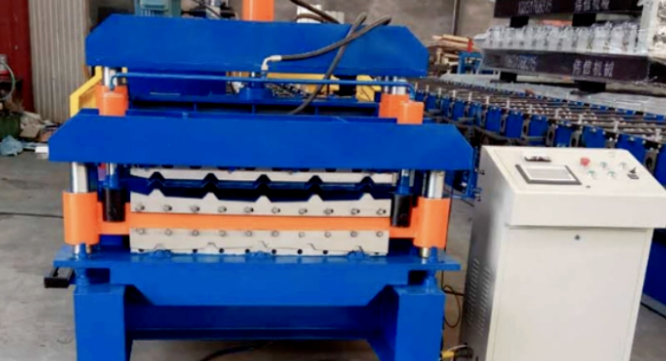
Posted on Thursday, October 3, 2024
The future of roll forming in smart manufacturing is closely tied to the rise of Industry 4.0 technologies, where IoT (Internet of Things), AI (Artificial Intelligence), and data analytics are revolutionizing the production process. Here's a breakdown of how these technologies are transforming the roll forming industry:
IoT technology allows machines on the factory floor to be interconnected, enabling real-time monitoring of roll forming equipment. Sensors embedded in roll forming machines can track critical parameters like temperature, pressure, and machine speed, offering real-time insights. This helps to predict machine wear, reduce downtime through predictive maintenance, and ensure consistent quality by alerting operators to any deviations in the process.
AI and machine learning algorithms can analyze vast amounts of data from the production process to optimize machine settings and improve overall efficiency. These systems can automatically adjust roll forming machine parameters to enhance material usage, reduce waste, and speed up production without compromising quality. AI can also play a role in predicting future demand, allowing manufacturers to adjust production schedules and materials accordingly.
Smart manufacturing relies heavily on data-driven decision-making. By collecting and analyzing data from the entire roll forming process, manufacturers can identify bottlenecks, improve production line efficiency, and make informed decisions about machine upgrades or maintenance schedules. Advanced data analytics can also help in forecasting market trends, allowing companies to respond proactively to changing customer demands.
The future of roll forming will see even more integration of automation, with robotic systems playing a key role in material handling, loading, and unloading processes. Automation ensures greater precision, reduces the margin for human error, and allows roll forming lines to operate continuously with minimal intervention, enhancing overall productivity.
In smart factories of the future, roll forming machines will be fully integrated into digital ecosystems, where all machines communicate seamlessly with each other. Digital twins (virtual representations of physical machines) could simulate production runs, enabling manufacturers to optimize performance before actual production starts. These connected systems will lead to increased flexibility, allowing manufacturers to quickly switch between different products or adjust specifications on the fly.
In summary, the future of roll forming in smart manufacturing is defined by increased connectivity, intelligent data use, and automation, all working together to create more efficient, flexible, and resilient production processes.

Most Popular Roll Forming Machines in the United Kingdom
Posted on Thursday, December 11, 2025
This blog breaks down the five most in-demand roll forming machines in the UK

Can I Finance a Roll Forming Machine?
Posted on Thursday, December 11, 2025
Financing a roll forming machine is easier than most buyers think. Here’s how leases, loans, and payment plans make production affordable.

Roll Forming Machines for Sale in the UK: What Buyers Need to Know Before Purchasing
Posted on Thursday, December 11, 2025
This complete guide explains everything UK buyers must know before purchasing, including machine types, voltage requirements, CE/UKCA compliance

Roll Forming Machines for Sale in the USA: What Buyers Need to Know Before Purchasing
Posted on Wednesday, December 10, 2025
This guide explains everything U.S. buyers need to know before purchasing a roll forming machine, including machine types, pricing, voltage
Copyright 2026 © Machine Matcher.